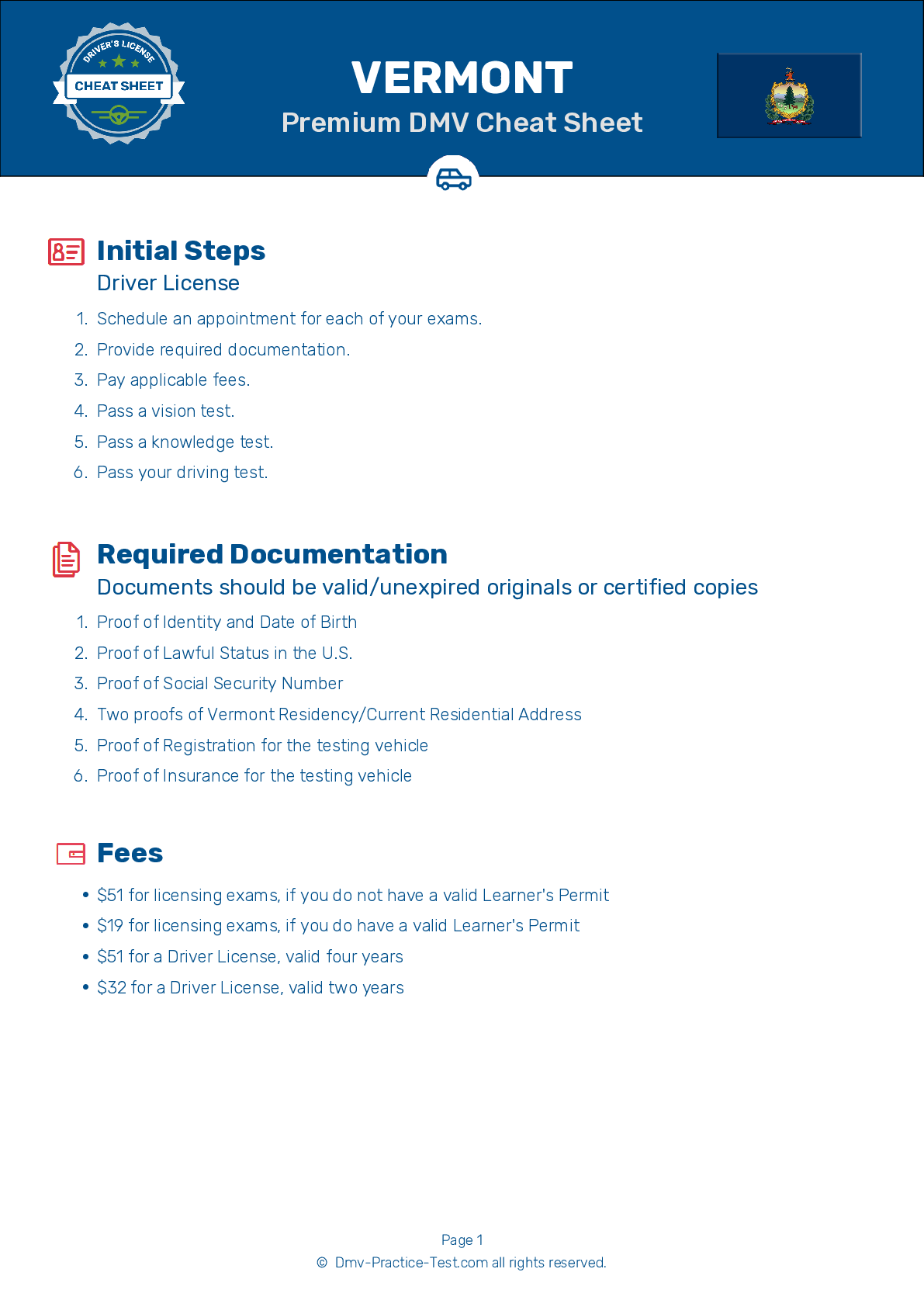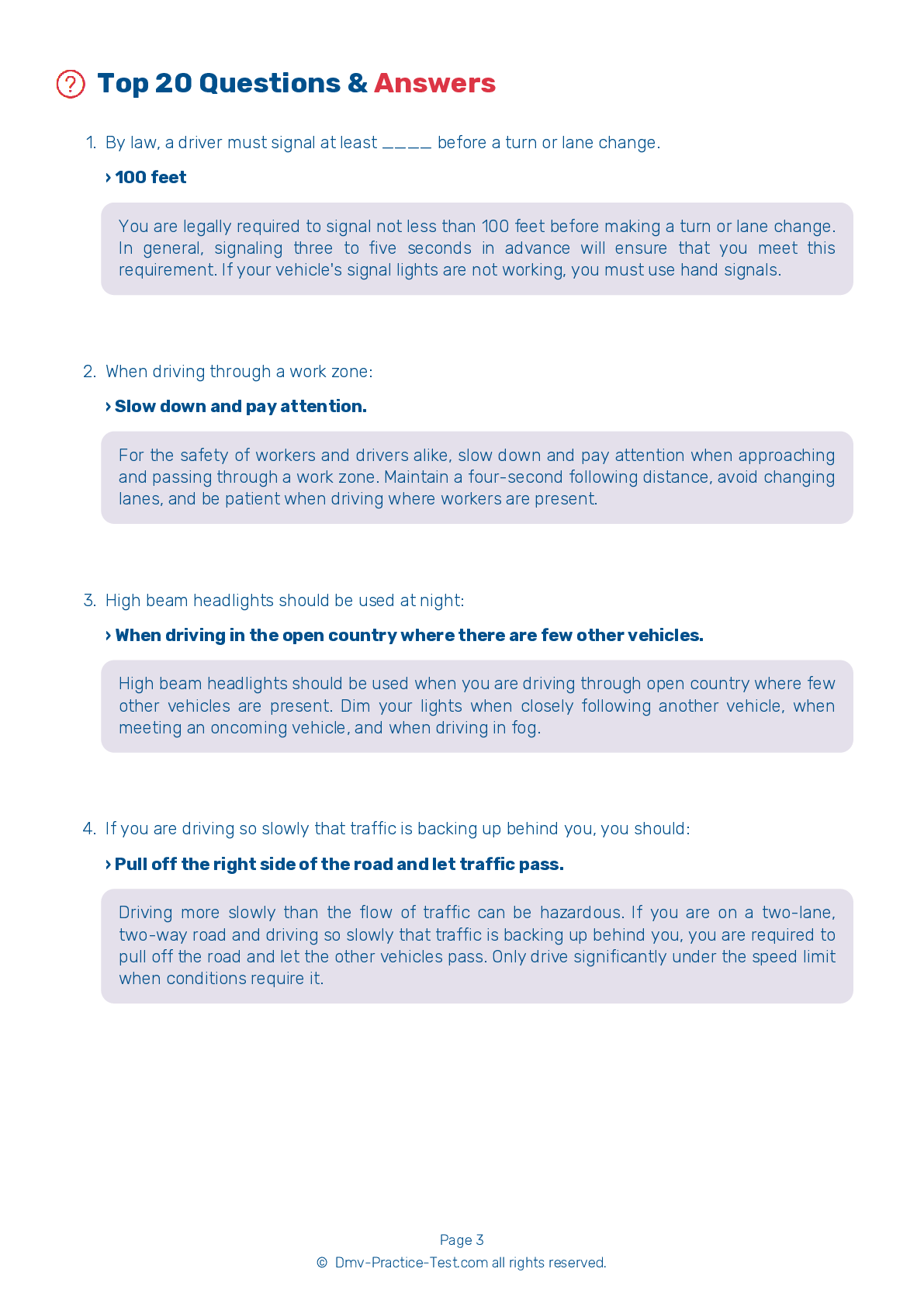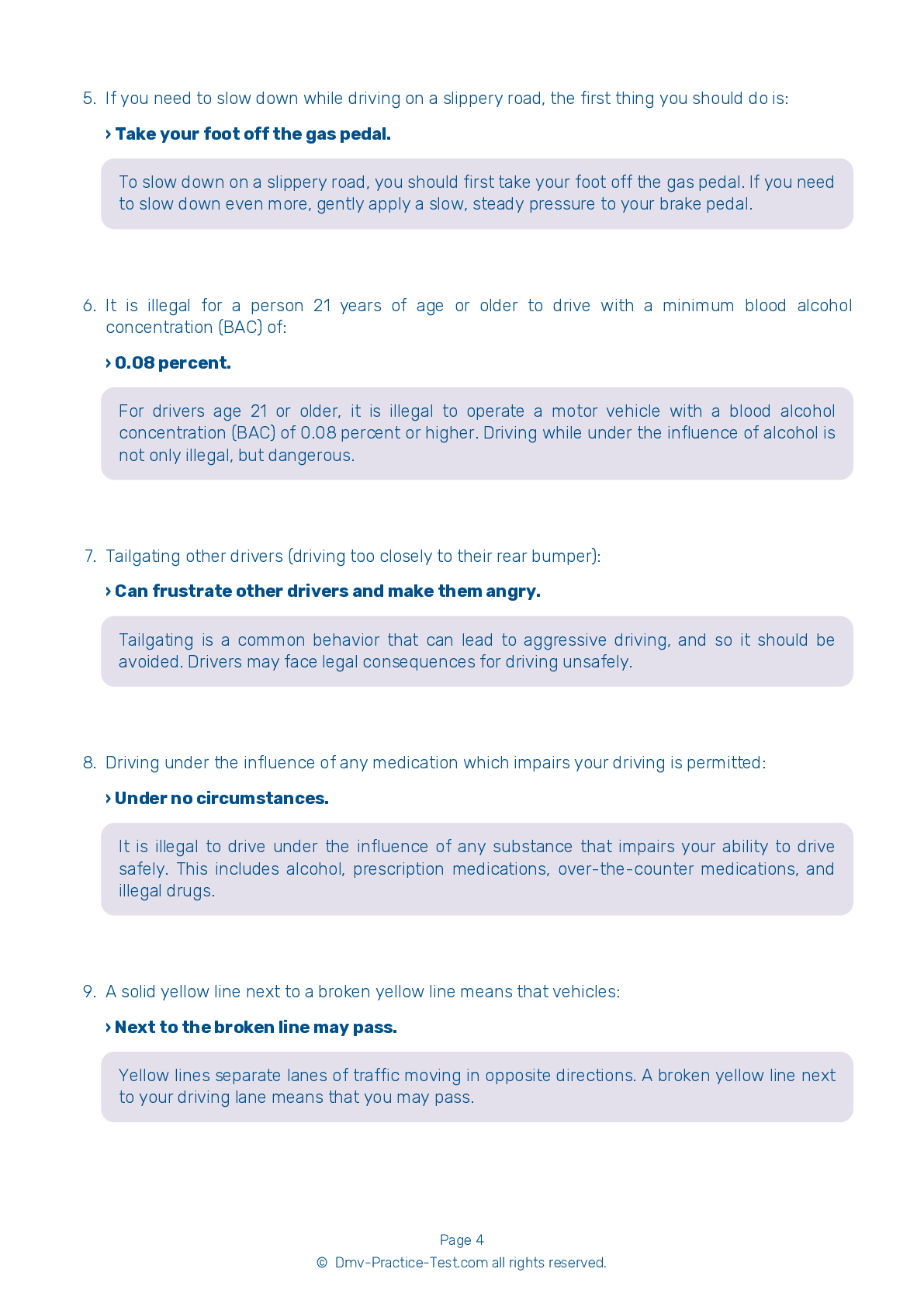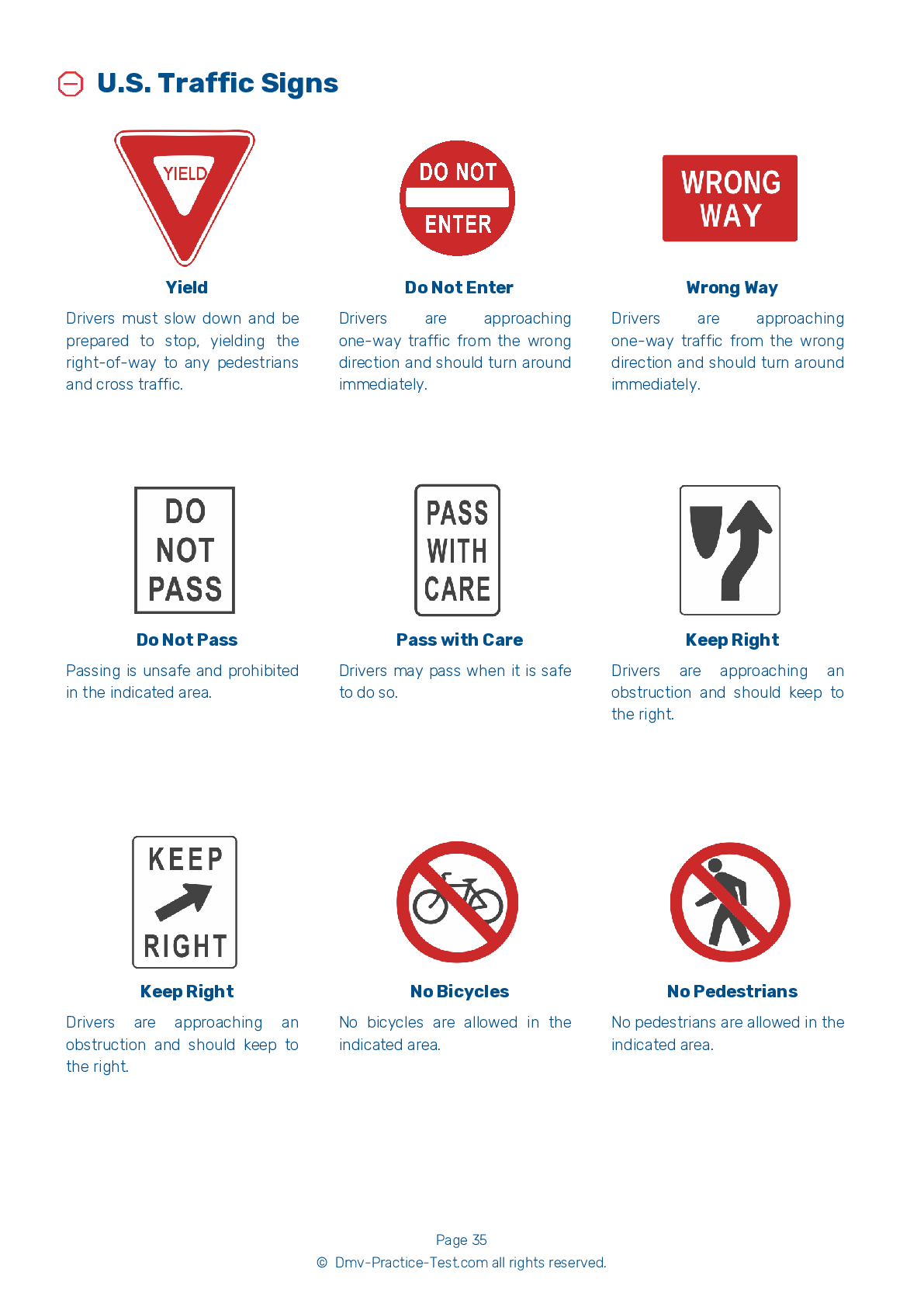FREE Vermont DMV Practice Test #7 Page 2 of 3
The Vermont DMV practise examinations have been updated for January 2025. It includes questions based on the Vermont Driver Handbook's most significant traffic signals and legislation for 2025. Use actual questions that are very similar (often identical!) to the DMV driving permit test and driver's licence exam to study for the DMV driving permit test and driver's licence exam.
On the practise exam, each question gets a tip and explanation to help you remember the concepts. The written component of the official Vermont DMV test will include questions about traffic rules, traffic signs, and driving statutes, as well as knowledge from the Driver Handbook.
To obtain a passing grade, you must correctly answer 16 of the 20 questions. Use the practise exam provided by the Vermont Department of Motor Vehicles to help you prepare for your instruction permit or driver's licence.
The DMV exam is available in several languages.
Using any kind of testing assistance will result in an automatic fail, and the DMV may take additional action against your driver's licence, so stay away from it.
7 . To avoid collisions with vehicles in your blind spots, you should:
Before turning or changing lanes, turn your head and glance over your shoulder in the direction of your move to see if your blind spot is clear. Never rely on your mirrors alone.
8 . To enter a freeway:
When merging into traffic, you should signal and enter at the same speed that traffic is moving. Always yield to other traffic when entering a roadway.
9 . You may not park:
There are a number of locations where it is unlawful to park, including on a crosswalk or in a marked bicycle lane. When parking on the street, you must be within 12 inches of the side of the road.
10 . A work zone:
Work zones are often stationary, but they may also be present in the form of moving vehicles striping lines, mowing, or removing snow. Work zones are marked by orange signs with black lettering or symbols. Slow down and pay extra attention when approaching or driving through a work zone.
11 . When approaching a railroad crossing, you should:
When you see any signs indicating a nearby railroad crossing, you should slow down, look for a train, and be ready to stop. If the red warning lights are flashing or the gate is down, you must stop 15 to 50 feet before the railroad tracks. Do not try to go around the gate.
12 . If another car is in danger of hitting you, you should:
Your horn should be used to warn other drivers or pedestrians in situations where they may not see you. For example, if you think another driver is about to hit you, you should sound your horn.
13 . If an officer is directing traffic at a working traffic light, drivers should:
Traffic signals are placed at intersections to keep traffic moving and to help prevent crashes. Drivers, pedestrians, and cyclists must obey these signals, except in instances when an officer is directing traffic.
2025 Vermont | Frequently Asked Questions
1. Not checking mirrors and blind spots before changing lanes or turning.
2. Speeding or driving too slowly for the conditions or posted speed limit.
3. Not coming to a complete stop at stop signs or red lights.
4. Incorrect signalling or not signalling at all.
5. Poor parking, especially parallel parking.
Remember, practice makes perfect, so take time to hone your skills.



